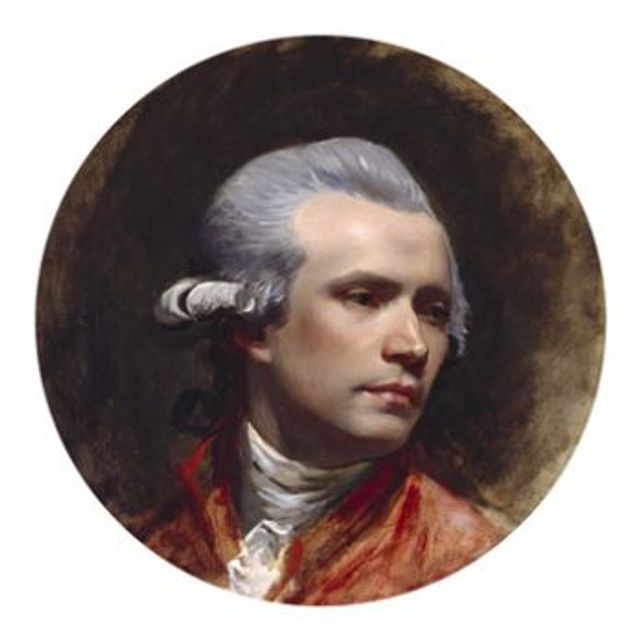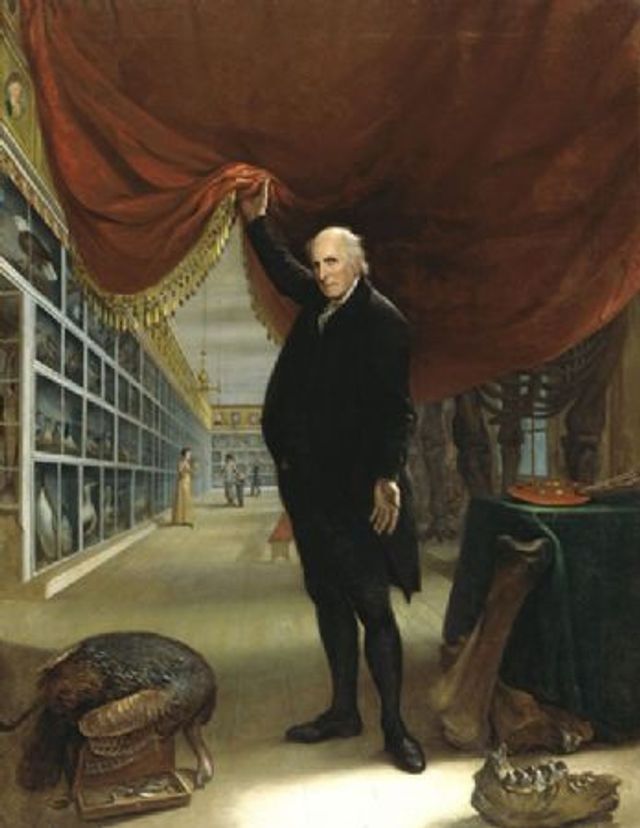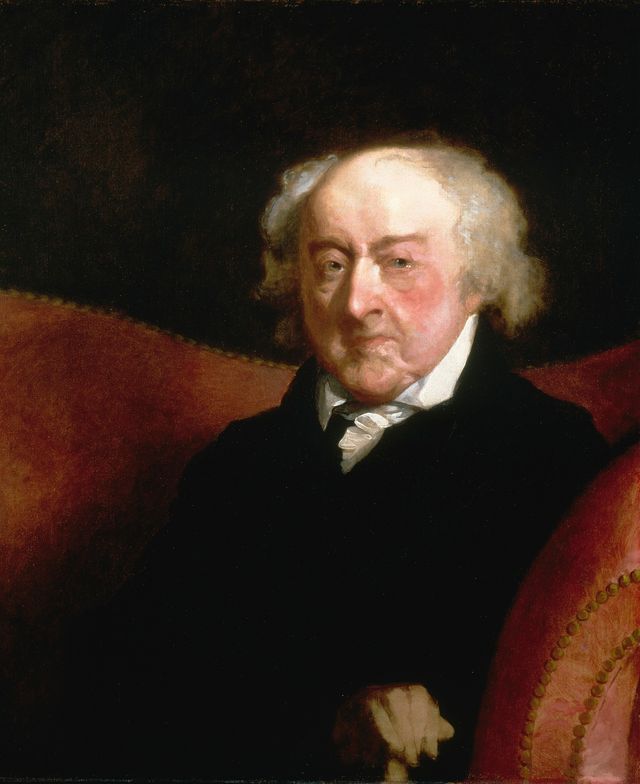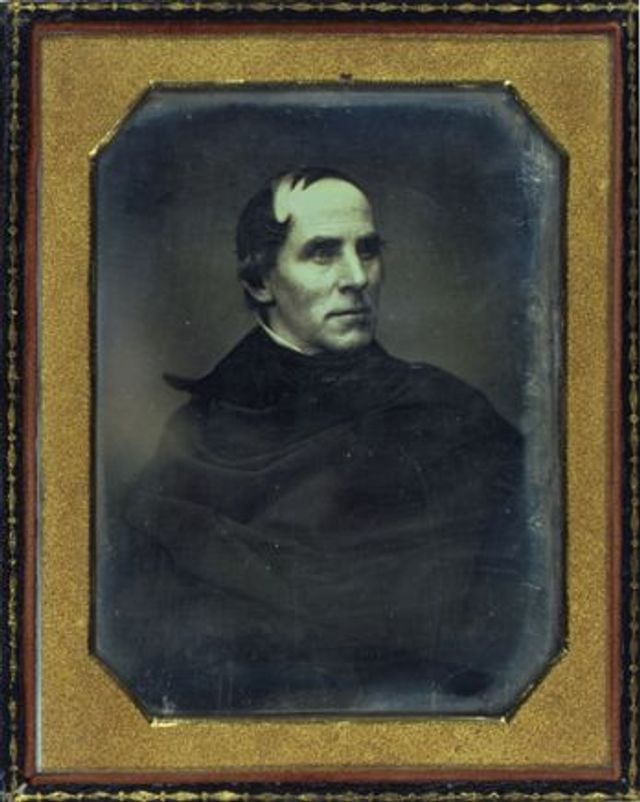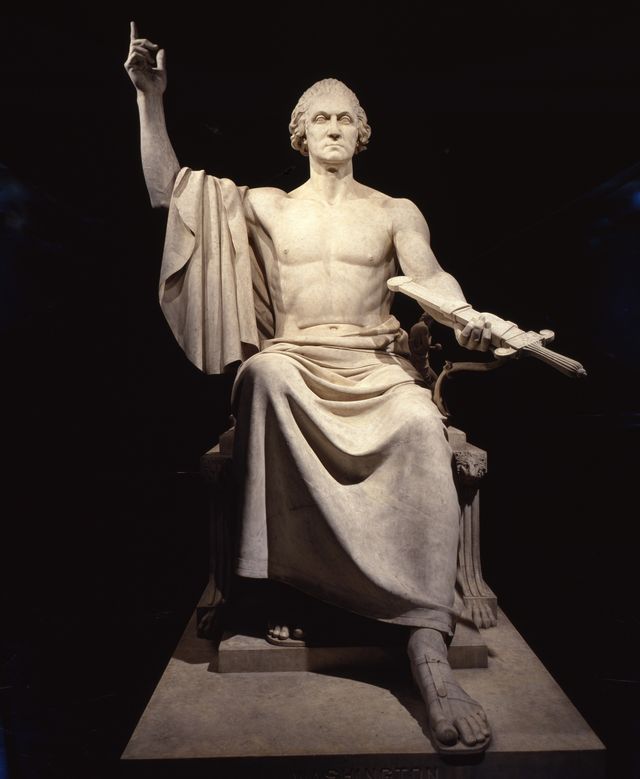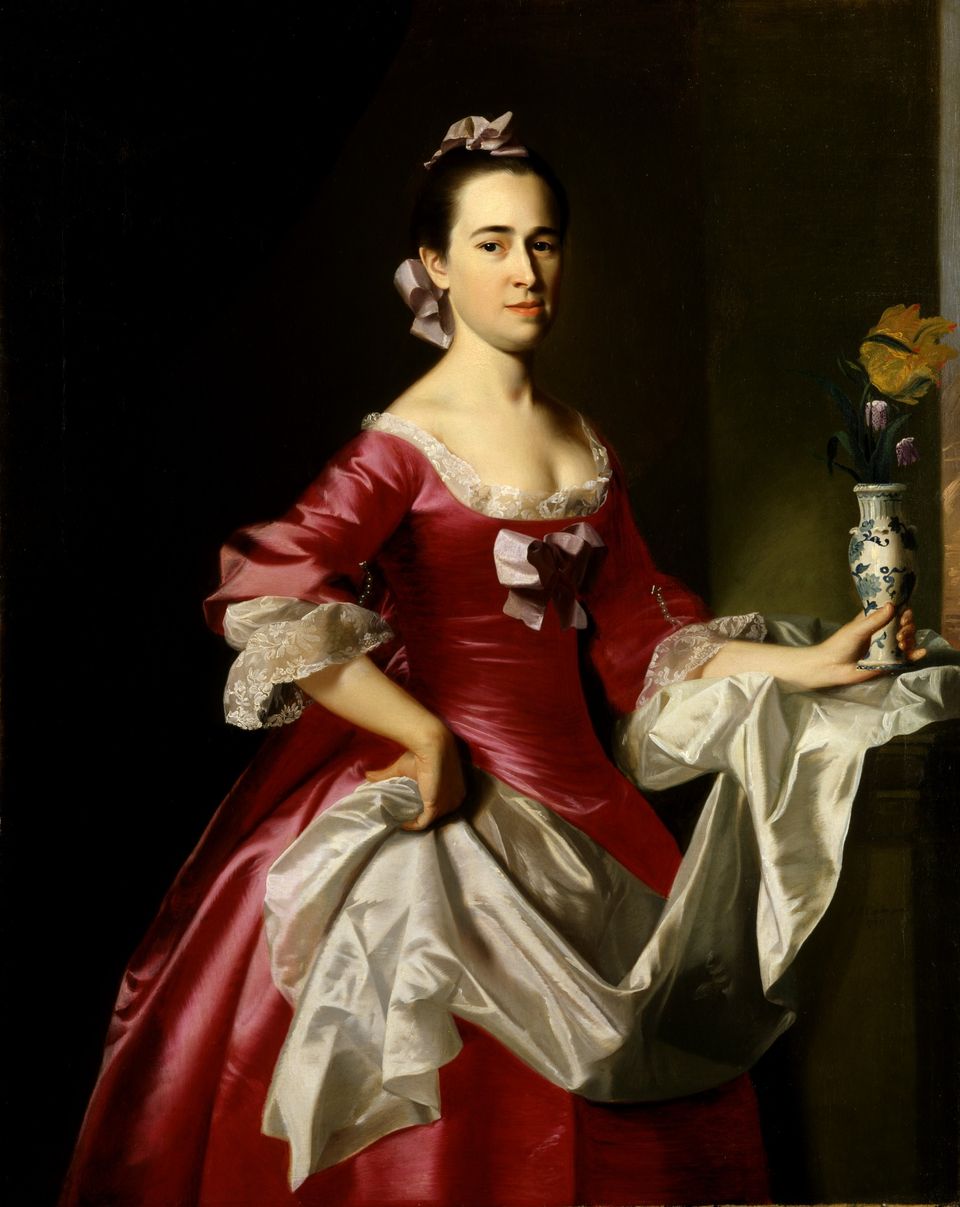
The museum’s collection begins with works from the colonies of New Spain and New England. Some of the oldest works in the collection are from seventheenth-century Puerto Rico—Santa Bárbara (Saint Barbara), a painting from about 1680–90, and Nuestra Señora de los Dolores (Our Lady of Sorrows), a painted wood sculpture from about 1675–1725. The collection features artworks that trace the transformation of the thirteen colonies into a nation, including portraits by John Singleton Copley, Charles Willson Peale, and Gilbert Stuart; landscapes by Thomas Cole; and sculptures by Horatio Greenough. Copley’s portrait of Mrs. George Watson emphasizes luxurious fabric, lace, Delft pottery, and flowers—costly imports and fitting props for the wife of a prominent Boston merchant. That port city was a vital center of shipping and trade in the English colonies.
Selected Works
Related Artists
Born in Boston, moved to London in 1774. The most celebrated American artist of the 18th century, he achieved great success first as a portraitist in Massachusetts, later as a history painter in England.
Born 15 April 1741, Queen Anne's County, Md. 1750, death of father. 1751, family moved to Annapolis. 1754, apprenticed to a saddler. 1761, established a shop in Annapolis. 1762, married Rachel Brewer.
Born in Rhode Island, trained in London, worked in the U.S. and the British Isles.
As a young artist [Thomas] Cole roamed the Hudson River valley and the region around the Catskill and Adirondack mountains, making sketches of the shrubs, trees, rocks, and waterfalls that he later incorporated into his own imaginative compositions to
Horatio Greenough was the first American to make sculpture his profession and to gain international recognition thereby. He was born in Boston and began his career copying casts of classical sculptures at the Boston Athenaeum.














